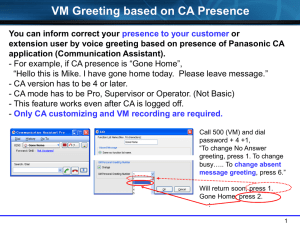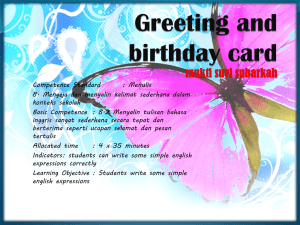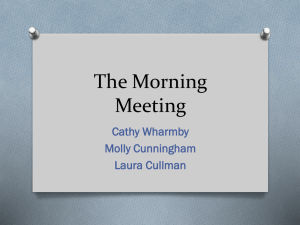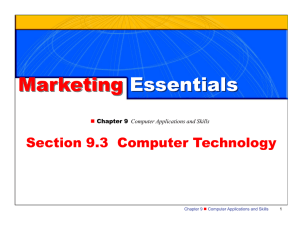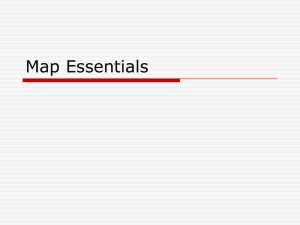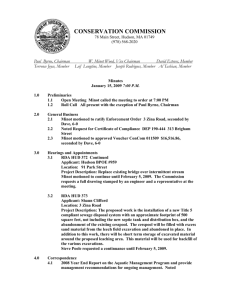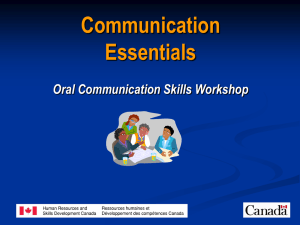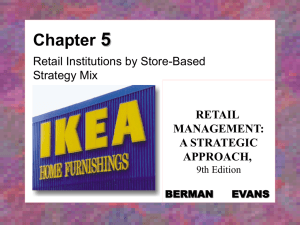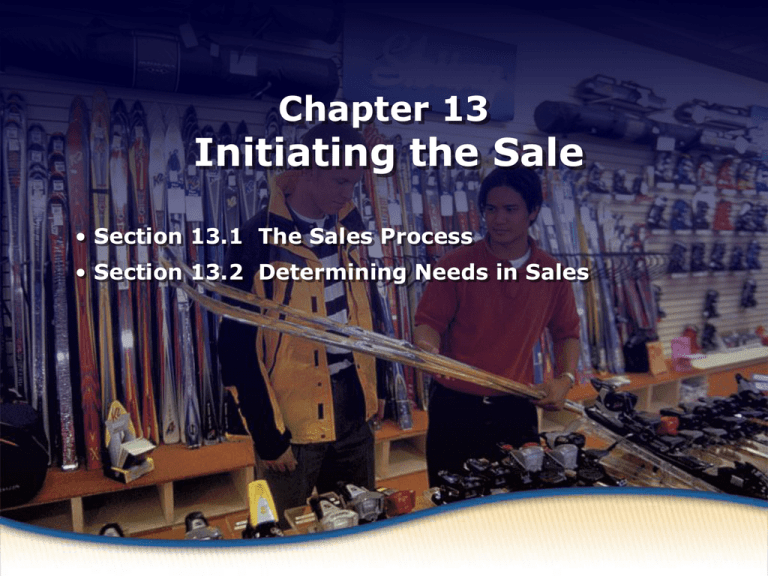
What
Is Selling?
Chapter
13
Initiating the Sale
• Section 13.1 The Sales Process
• Section 13.2 Determining Needs in Sales
What Is Selling?
Objectives
List the seven steps of a sale
Explain the importance and purposes of the approach in
the sales process
Demonstrate how business-to-business sales
representatives conduct the initial approach
Name three methods for making the initial approach in
retail sales
Marketing Essentials Chapter 13, Section 13.1
The Selling Process
Selling process of matching customer needs and wants to the
features and benefits of a product or service
Seven key steps to helping a customer decide on a purchase:
1. Approaching the customer: Greet the customer face-toface
2. Determining needs: Learn what the customer is looking
for
3. Presenting the product: Educate the customer about
the product’s features and benefits
4. Overcoming objections: Learn why the customer is
reluctant to buy and providing information to remove that
uncertainty
The Selling Process
5. Closing the sale: Get
customer’s agreement to buy
6. Suggestion selling: Suggest
additional merchandise that
will save customer money or
enjoy the original purchase
ex: Best Buy- after laptop
purchase you can get a printer
for ½ off
7. Relationship building:
Create a means of maintaining
contact with the customer
after the sale is done
Marketing Essentials Chapter 13, Section 13.1
Two Types of Customers in Selling
• B2B selling is different than Retail Selling (Consumers)
1. Approaching the Customer
Initial Impressions are lasting:
• Salespeople can make or break a sale in the first few
minutes
• Initial approach is critical and has three purposes:
1.Begin a conversation
2.Establish a relationship with the customer
3.Focus on the product
GREET THE CUSTOMER
When greeting a customer, use GNAP.
Purpose: GNAP is an acronym on how to properly
introduce yourself. It’s practiced with a smile and a
handshake.
G – greeting - Hi, or Hello
N – name - what is your name
A – affiliation - what company/group do you represent
P – purpose – why are you here/calling
GNAP Examples
Can be used in any situation and in selling!
“Hi, I’m Carrie. I am a junior at Minot High School and am
here to pick up an application.”
“Hi, my name is Carrie. I’m a member of the Minot High
softball team. I’m here to drop off these flyers for Randy
Wilson.”
“Hello, my name is Carrie. I work with Minot High School.
I’m looking to print a small catalog and am wondering
who I would speak with about a price estimate.”
You Try
• Request a meeting:
– You are part of DECA. You are calling Jones Photography to
sell them a one month ad space in the Minot High Window
Display Case. Write your introductory statement to request an
appointment.
• Arrival at the Meeting:
– You are part of DECA. You have been asked to sell the window
display space to local businesses. You have already set up an
appointment with James Jones at Jones photography. Write
your greeting in the space provided in your note packet.
The Approach in Business-to-Business Selling
1. Begin a conversation
•
Conducts research prior to meeting – what products you may
have to meet their needs
•
Salesperson sets up an appointment
•
Arrive early to will show your customer you are interested
•
Smile and introduce yourself and your company (GNAP)
•
Use the customer’s name. You can also give a business card
2. Establish a relationship with the customer
1.
Existing Customers - recollections about the customer’s
family, interests, or hobbies
2.
Comment on recent happenings in industry, or comments on
what you see in their business
3. Focus on the product
1.
What are the features that will build desire and interest in
the customer. Convert these to how they will benefit the
customer
Approach in Retail Selling
1. Begin a conversation
•
be alert to customer’s interests
•
Observe the customer’s behavior in the store
•
Greet the customer - good morning/afternoon/evening
2. Establish a relationship with the customer
1.
Treat customer as an individual – use eye contact and
show genuine friendliness
2.
Don’t stereotype based on age, sex, race, appearance
3.
Be enthusiastic, respectful, and maintain eye contact
3. Focus on the product
1.
What are the features that will build desire and interest
in the customer. Convert these to how they will benefit
the customer
Marketing Essentials Chapter 13, Section 13.1
The Bad Salesman
The Approach in Retail Selling
Three approach methods used for retail customers:
1. The service approach
2. The greeting approach
3. The merchandise approach
Evaluate the selling situation and the type of customer to
determine which method is best
Marketing Essentials Chapter 13, Section 13.1
Greeting the Customer
Service Approach
service approach X, A way to approach a customer that
focuses on asking the customer if he or she needs assistance.
•Used an open-ended question such as “Good morning, how
can I help you?”
•Customer can say “yes” or “no.”
Marketing Essentials Chapter 13, Section 13.1
Greeting approach
greeting approach X a way to approach a customer that
focuses on welcoming the customer to the store
salesperson simply welcomes the customer to the store
• Simply Saying “Good morning”
• customer knows salesperson is available for assistance
• Important to smile and be friendly
• Use a rising tone of voice - falling tone sounds unfriendly
Marketing Essentials Chapter 13, Section 13.1
Merchandise Approach
merchandise approach X, the salesperson makes a comment
or asks questions about a product in which the customer
shows interest
• Method used if a customer stops to look at a specific item
• Start talking about product without asking if need assistance
• Give information about product that is not apparent to the
eye
• Talk about its features and benefits
• usually the most effective initial approach in retail sales
because it immediately focuses attention on the product
• “Good morning, that is a great couch. It has a full 3 year
warranty…..”””

